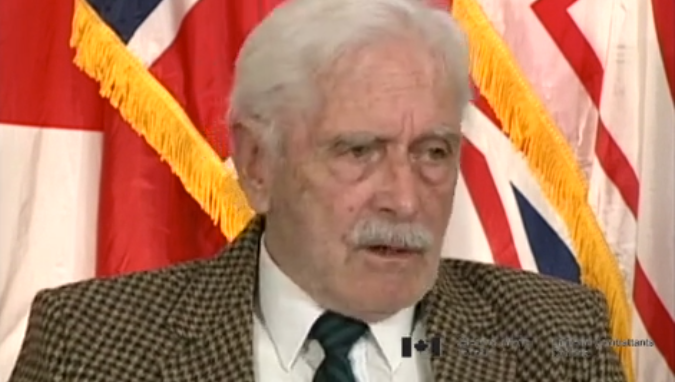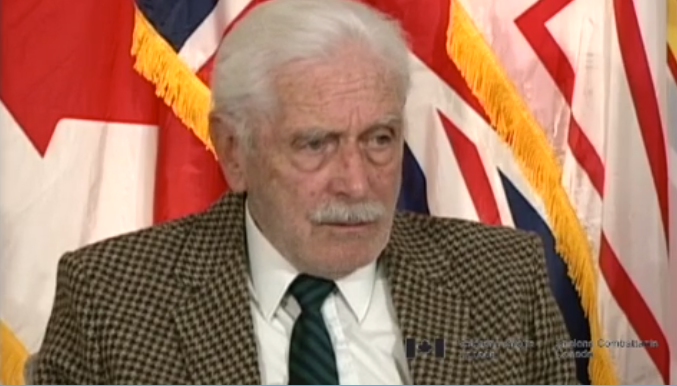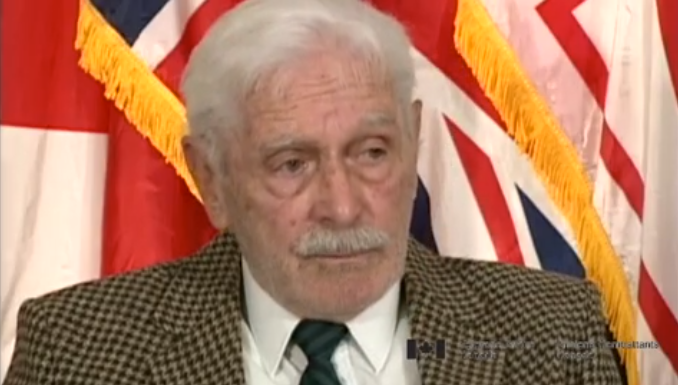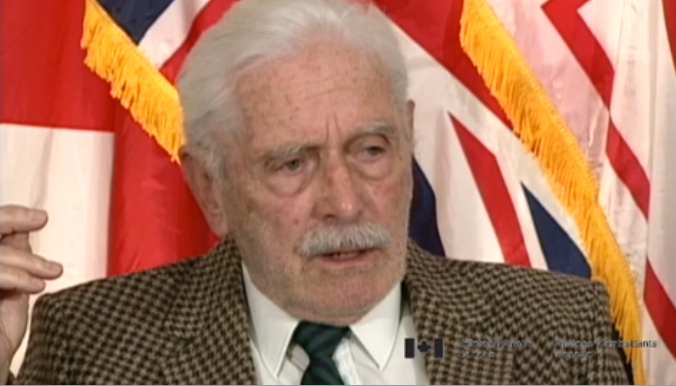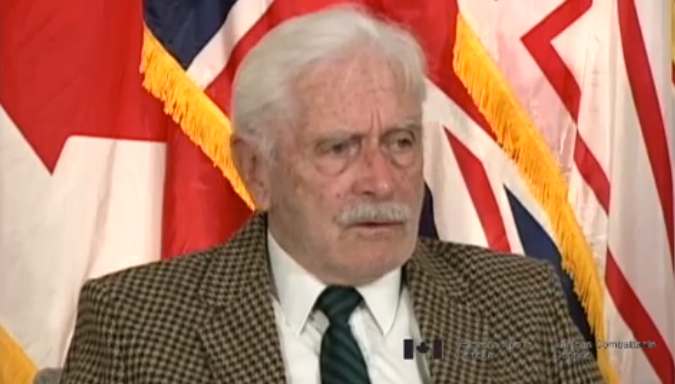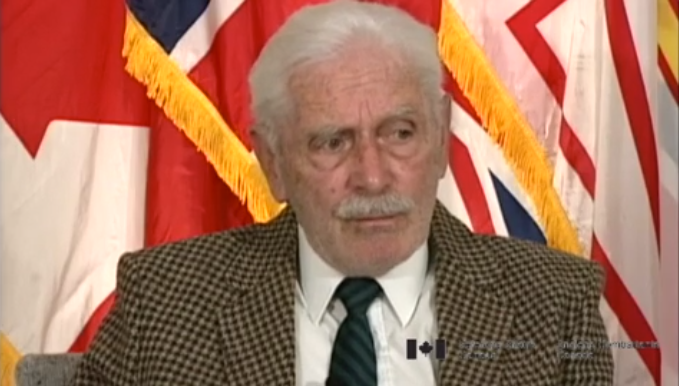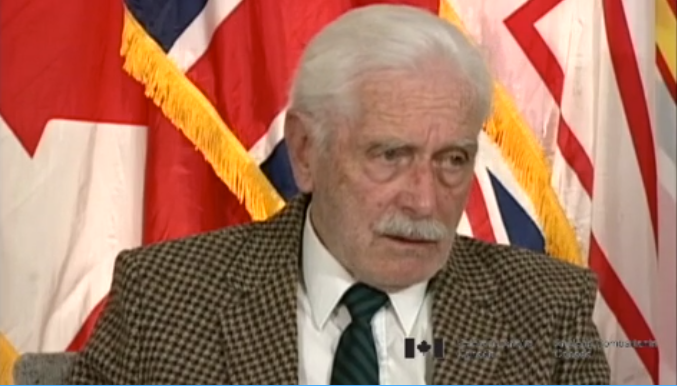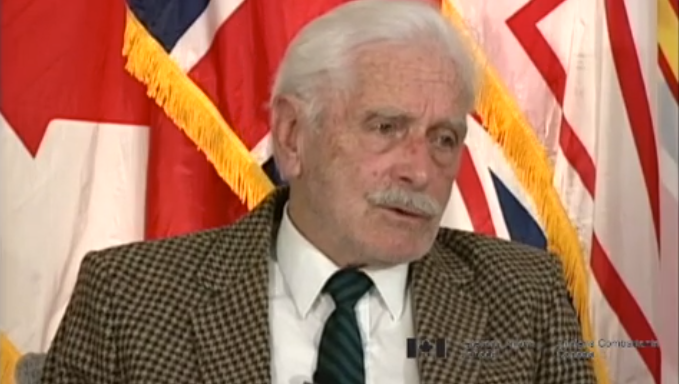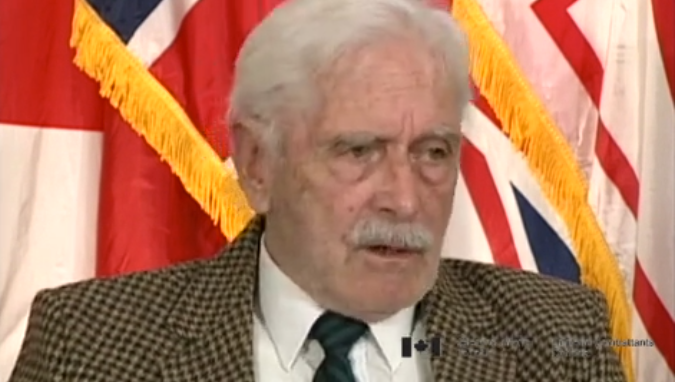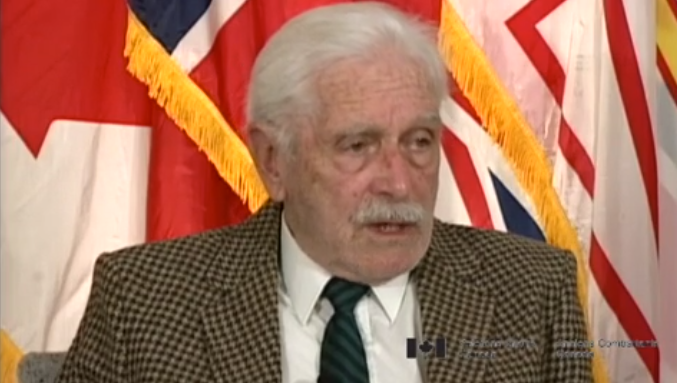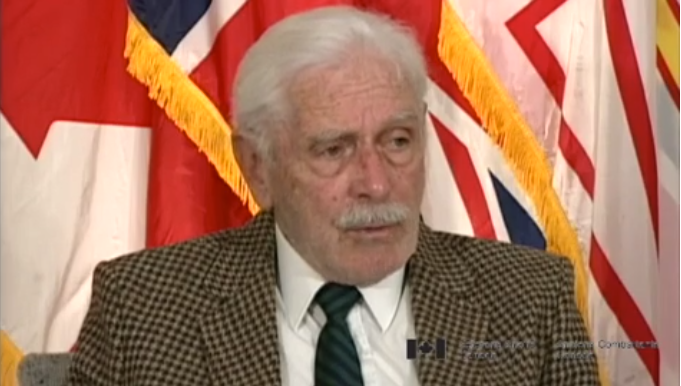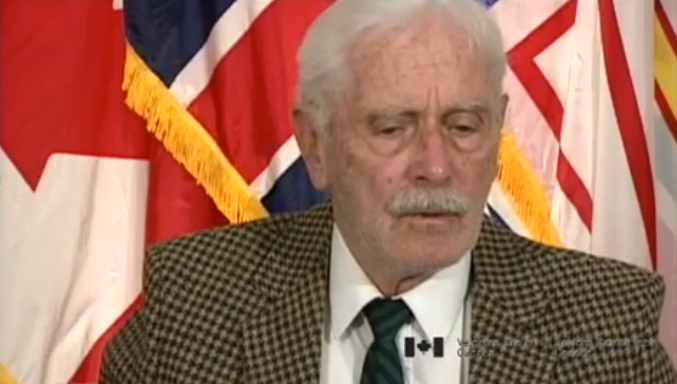Spared by the Admiral von Scheer
Heroes Remember
Spared by the Admiral von Scheer
I was, I was a sailor then and I was in
the crow's nest of the Northern Prince and
we were about probably ten days out of
New York going at high speed.
She was, whatever she could suffer.
She was, she was suffering.
And on the starboard bow just before dark,
while it was still good light, I saw something on
the starboard but most unusual.
But I saw something and it was, it was a ship
and I reported to the bridge on the telephone.
Ship on the starboard bow, 3 points or 4 points,
“What does it look like?” I said, “Warship.”
That's all I could tell. It looked like a warship.
And shortly after, a knock came on the
bottom of the crow's nest trap door.
I opened it and up came the fourth officer.
A Mr. Andrews, and with him he had a pair of
binoculars and a book and he looked carefully.
He looked carefully at whatever this object was.
It was smooth, no wind, no swells,
unusually smooth. And he said,
“Good Christ, it's a pocket battleship!”
And he shouted, literally shouted down into
the telephone. We did a 90 degree turn to port,
and somewhere the engineers must have
found a few more revs somewhere because
the ship started to, ship started to, she'd wag.
Not, not shutter. She'd wag like this and
the crow's nest bells started to ring in
sympathy with this... ding, ding, ding.
Anyhow, we went off at high speed,
at 90 degrees from where we had been going.
The Admiral Von Scheer, one of the German,
one of the three German pocket battleships
were out hunting for the Jervis Bay convoy.
They knew she'd left Halifax and she had been
reported on different times and they knew that,
that the, the Admiral Von Scheer knew
that the Jervis Bay convoy was nearby.
This brings me to November the 5th when
I saw the warship on the starboard bow.
She didn't bother us at all. We, we were gone.
Within two hours she found the convoy and
the Jervis Bay told the convoy to scatter
and she faced the Admiral Von Scheer,
which had eleven inch guns and a range of
probably 20 miles and the Jervis Bay
had six inch guns, a far shorter range,
but the Jervis Bay faced the Admiral Von Scheer
and they pounded her and they pounded her
and they pounded her until she sank.
And it clicked in my mind about the
encounter that we had with this warship and
it turned out, we were the one, only of the ones
that she sighted but she chose not to create
a disturbance because they knew the convoy
was near and they didn't want to raise the alarm.
Related Videos
- Date modified:



